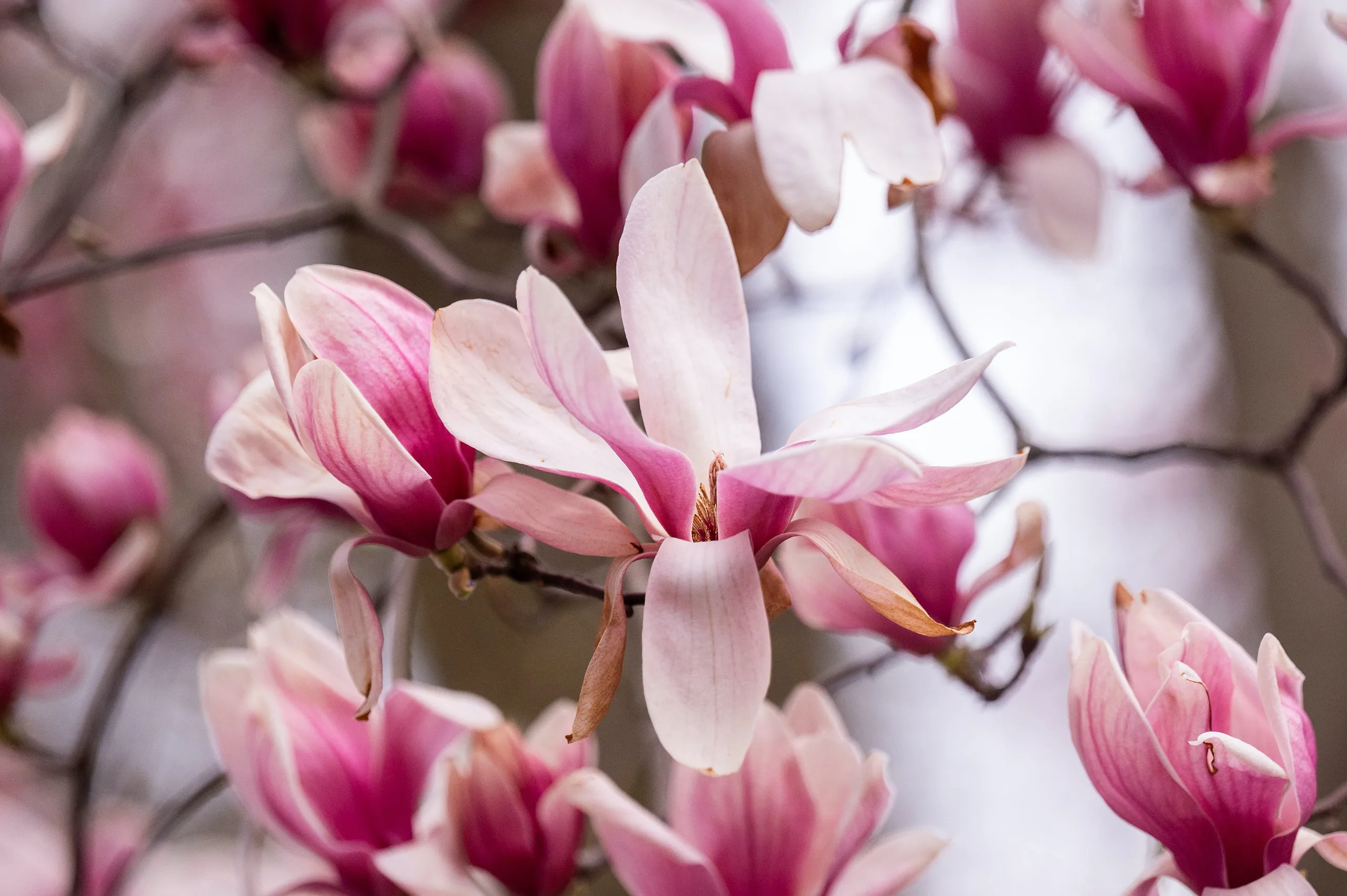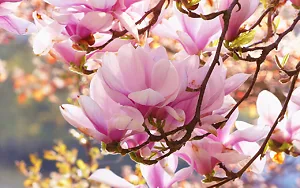
Written by s • Flowering Trees and Shrubs for Early Spring
Spring is the great highlight of the gardening year, always with a profusion of color, scent and interest from all kinds of flowering plants. Just when exactly that great moment arrives depends on where you live and what kind of weather we have had. There is a way to encourage spring to arrive as soon as possible, and that is to grow some of the beautiful early-flowering trees that are available to us. These plants – as anxious as we are for spring to come – are notable for flowering in advance of the main crowd. Perhaps they do this to be especially attractive to early pollinators, but whatever their practical reasons may be, the result is a glimpse of spring while most plants are still dormant, and even while some snow still lies in the shady corners of our gardens.
There are few thrills to beat rising on a sunny morning in late winter, stepping outside into a day that feels definitely warmer than those before it, and seeing a tree or shrub wreathed in swelling buds and flowers tentatively opening to a new garden year. That thrill is available to anyone, simply by choosing wisely from the vast array of plants available. It makes good gardening sense to spread flowering across the seasons, by choosing something for different months of the year. When doing that, don’t forget to consider those plants that are always very early, the Spring Heralds of better days to come.
Trees for Early Bloom
There are lots of plants available when making that choice of what to grow, so let’s consider some of the early-blooming plants that we can put in our gardens. First, a quick thought about locations, and where to put these spring charmers. They might think it is warm enough to start growing, but for us the days may still be chilly, and venturing out into the garden is not going to be top of our ‘to-do’ lists when temperatures are still cool. So, put these early-bloomers where they can be seen from windows we tend to look out of most, like bedrooms or the kitchen. Seeing that tree covered in flowers from indoors will really warm our hearts and bring us hope that winter has finally gone.
Magnolia Trees
Depending on where you live, you can have magnolia blooms as early as February, as these beautiful trees are among the first to bloom in most gardens. We are talking here about the deciduous magnolias, not the evergreen southern magnolia, which blooms in summer. The deciduous magnolias are much hardier, with many growing well in zone 4, where temperatures go down to minus 30 in mid-winter. Even in the coldest areas these trees are the first to bloom, as soon as the snow has gone, but it is when they are grown in warmer areas that their early blooming really stand out. Although very hardy in cold areas, they also grow well in much warmer regions, and thrive in zone 8, where winter passes quickly. These stand-out trees can be in bloom in February or early March in such warm climates, and make a stunning garden statement while most other plants are still asleep. Their pink, purple-pink or white blooms are large, cup-shaped and upright. They smother the still-bare branches of the trees and they are among the most beautiful of all flowering trees.
In those areas between warm and cold, late frosts can be a problem, so it is worth sacrificing a week or two of bloom and choosing varieties that bloom a little later than most. These, like the Jane Magnolia, can be quickly identified, because they all have girls’ names. ‘Jane’, ‘Betty’ and even ‘Randy’ are all part of a group called the Little Girl Series, developed at the National Arboretum in Washington, D.C. They are all smaller trees no more than 15 feet tall, so ideal for small gardens. By flowering a little later than many other varieties do, they avoid the late frosts that can kill developing flower buds and destroying all the fun of spring. By blooming a little later, most frosts are avoided, and the blooming of these trees is much more reliable.
Forsythia
A well-loved standard among the early flowering shrubs is the forsythia. While snow still lies on the ground, the bare branches of this reliable shrub are already garlanded with golden bells. Some, like the Lynwood Gold Forsythia, are hardy even in zone 4, and can be in bloom in March, reminding us that spring is indeed coming. In slightly warmer areas the Golden Bells Forsythia is a wonderful choice. If that plant’s 8-foot height is too much for your garden, choose instead the Show Off Forsythia, which really does show off its lemon-yellow blooms on a plant just 3 or 4 feet tall. Forsythia also has the advantage of growing almost anywhere, without care, and surviving well in tough, urban conditions. If you grow impatient for your plant to start blooming, once January has past you can cut a few branches, put them into water indoors, and watch the buds swell in the warmth and be in bloom in a matter of days – a miracle that will enchant all the children (and adults too) in your home.
Serviceberry
When thinking of heralds of spring, we must not forget the Serviceberry. This deciduous small tree or large shrub is covered in pure-white blooms long before other trees are even stirring. It is hardy in zone 4, and with its smooth, soft-gray bark as a background, the mass of blossoms has a special charm. Planted on the edge of a wooded area, or standing alone in a lawn, it says spring is coming like no other hardy plant can. Once the blooms have faded, and our attention has moved on, it quietly develops a heavy crop of edible berries that make great pies and preserves – a mid-west staple of pioneer days.
Whatever plants you put into your garden, make sure at least one or two are very early blooming, so that you have blooms for the longest period possible. It is easy to do, and the rewards last forever.






